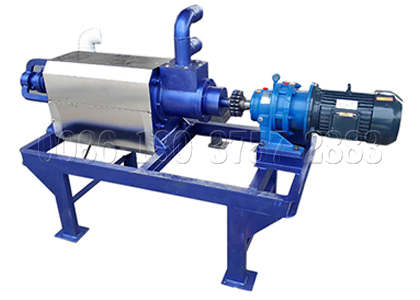Per la gestione dei rifiuti organici ad alto contenuto di umidità, il primo passo è rimuovere l'acqua in eccesso. Questo tipo di rifiuti organici include il letame bovino, letame suino e alcuni scarti agricoli. Mediante estrusione a vite, può realizzare la disidratazione dei rifiuti organici. Tongda produce due tipi di separatori di letame, separatore solido-liquido e schermo inclinato per la separazione solido-liquido. Secondo la nostra esperienza, riassumiamo le seguenti domande. E speriamo che ti siano utili.

1. Qual è la capacità del separatore di letame?
The input of organic waste: 8-15 metri cubi all'ora.
L'output dei rifiuti organici disidratati: 1.5-3 metri cubi all'ora.
2. What’s the materials of the whole machine?
All parts that contact with organic waste adopt SUS 304 ( such as hopper screen and auger).
3. Is it adopts explosion-proof motor ?
SÌ.
4. Is the pressure (dehydrating level) increased by hand with tools or is it electric ?
You need to adjust the pressure of manure separator by hand with tools.
5. What’s the moisture of organic waste after dehydrating?
In generale, it ranges from 25% A 40%. But you can adjust it according to your actual requirements.
6. What’s the hp of electric motor and the available voltage(110 V/220 V)?
The motor power is 4 Kw. The voltage can be designed and adjusted according your requirements.
7. What’s the size of liquid outlet hole?
Its diameter is 76 mm.
8. What’s the size of screen mesh?
Its size is 0.3-0.5 mm. And the customized size can achieve 0.1-0.3 mm.
9. Where can I use separated liquid from animal manure?
You can make bio-gas from it.
10. How to deal with organic waste after dewatering?
You can make a compost pile and produce organic waste compost, which can be used as organic fertilizer. Poi, you can make bagged fertilizer powder or pellets for commercial purpose.
Nota: Durante il compostaggio, the content of animal manure is at least 60%.


